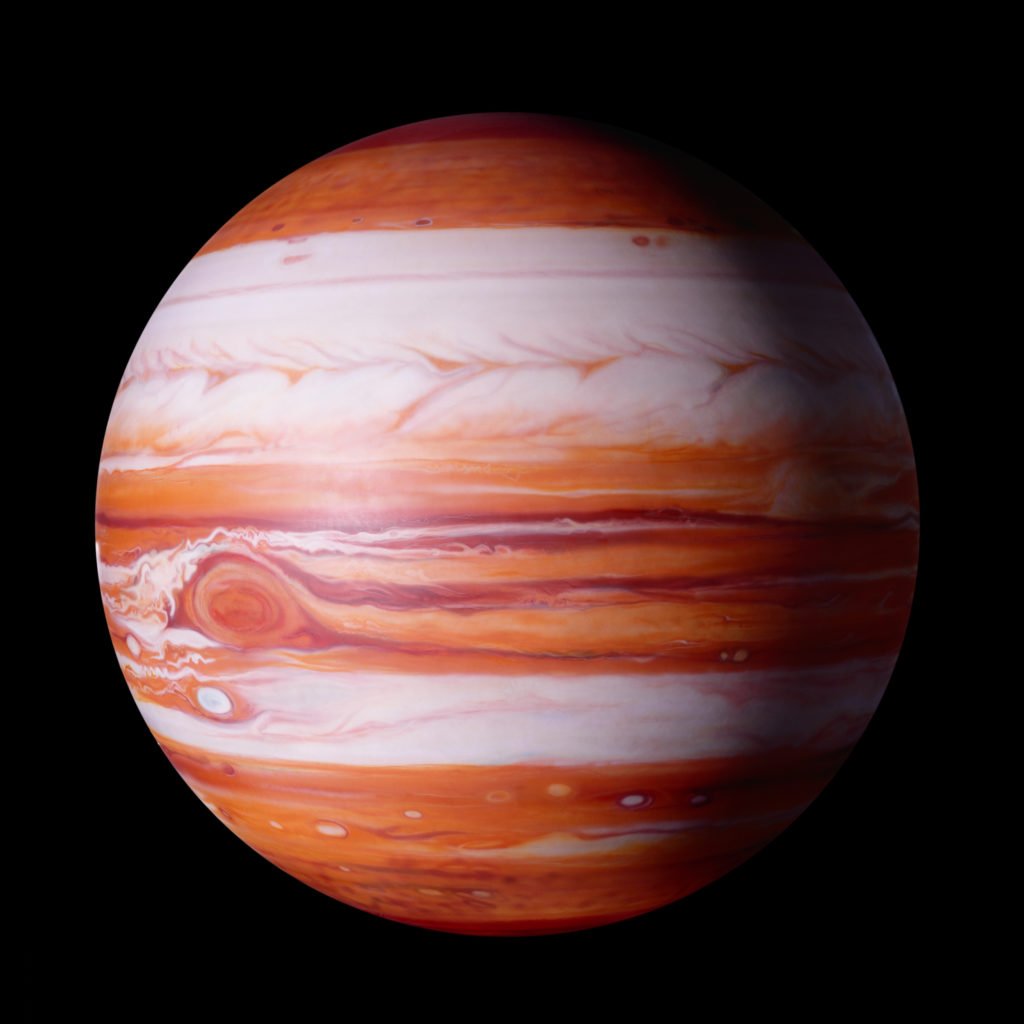
IT’S Obvious WHY NASA could spend decades and billions of greenbacks attending to Mars. Humanity ispretty connected to the concept that Mars is Earth’s slightly much less hospitable cousin. Why getting all the manner to Jupiter must be a priority is much less clean. The planet is a hurricane-torn ball of toxicfuel—now not precisely a splendid getaway vacation spot.
But remote and lethal as it’s far, the purple-eyed gas giant is exactly in which NASA’s Juno Venture is heading. After a nearly 5–year adventure, the unmanned, solar-powered Juno spacecraft should be going into orbit round Jupiter at around eleven:15pm ET on Monday, July 4th, sporting an array of devices with a purpose to do the whole thing from analyzing fluctuations in Jupiter’s gravity to visualizing its magneticsubject. It’ll snap some pretty pics too, of course.
That is, furnished that the difficult (But totally automated) enterprise of orbit insertion goes accordingto plot. Juno has one shot at syncing up with Jupiter’s gravitational pull. If the orbital maneuver is unsuccessful, there are no 2d probabilities—Juno will just sail on by. “the whole thing is driving on whatoccurs July 4th,” says Scott Bolton, the Juno Undertaking’s main investigator. “I haven’t felt this waybecause launch. If some thing goes wrong, we’re now not getting any technological know-how.”
And thinking about that Bolton and lots of his crew have been running on Juno for well over a decade,something much less than total fulfillment may be quite the blow. “I discovered early in my career that in this field, you need to be patient,” Bolton says. “But Juno is specific—I’m in my view liable for it all.”
The 49 mins it’ll take for Juno’s message of achievement or failure to tour the hundreds of thousands and thousands of miles among the spacecraft and Earth aren’t going to be easy. “I’m basically a frighteneddamage,” says Candice Hansen-Koharcheck, senior scientist at the Planetary Scientist Institute and JunoCam lead. “the whole lot has to take place without delay. It received’t be okay till it’s July 5th, and we will allstop hedging our bets.”
As gambles pass, Juno is high stakes, and not only for for my part invested scientists like Bolton and Hansen-Koharcheck. You ought to care: The records Juno gathers may want to lead to vast leaps in scientists’ know-how of now not simplest Jupiter, but the entire sun gadget. And probable of lifestylesitself.
The road to Jupiter
Before thinking about answering any of those questions, the Juno group had to construct somethingthat might even get out there. “the entirety approximately Jupiter is bigger and badder,” says Randy Gladstone, a planetary scientist and Juno’s Usainstrument lead. Jupiter has the strongest magneticdiscipline within the sun device. It’s lethally radioactive. And it’s hella a ways from the sun. That every one creates issues for scientific devices and spacecraft—specifically a solar-powered craft like Juno.
Juno’s engineers needed to design a craft with devices which can run on kitchen-appliance ranges ofelectricity and withstand extreme bloodless. “A sun panel in Earth orbit will get to twenty, 30 levelsCelsius—type of room temperature,” says Kevin Rudolph, a Lockheed Martin spacecraft lead systemsengineer on the Juno task. “But around Jupiter, in daylight, a sun panel may be at about –one hundreddegrees Celsius.” Any liquids in Juno’s machine (like the propellant they want for That every one–important orbital maneuver) is in steady hazard of freezing and bursting its pipes.
Of route, that’s all moot if the gadget gets fried by the point Juno arrives. Jupiter’s robust magnetic fieldway that any electrically conductive fabric that passes through it, inclusive of a steel-hulled spacecraft, is doing the deep space equal of shuffling its ft across a carpet and touching a doorknob. In trendy, electricequipment like the computers that make up Juno’s brain don’t take kindly to arcs and sparks.
Or to bombardment by means of radiation, for that depend. “Radiation can refer to protons and electronsthat are bumbling round like bees, going real gradual and now not very lively,” says Rudolph. “That form of protecting may be as simple as a piece of paper. However, you can have a lot better electricityparticles, usual of Jupiter surroundings, and those take loads more protective.” That’s why Juno’s Mostdelicate device is included inside a titanium vault that distributes stray electrons evenly, and shields it from radiation.
There were hiccups along the manner—like in the spring of 2014, when Juno got slammed by means of a cosmic ray that blue screened its computers for a while—But the ones moments have simply proved thepower of Juno’s self-correcting systems. “Our best accomplishment has been just designing andconstructing Juno,” says Bolton.
The Starting place of the sun machine
Thus far, This is. However that might alternate when Juno eventually goes into orbit. The craft willultimately make 37 close strategies, coming inside 2,900 miles of the gas large’s roiling clouds to take measurements. “There’s a ways extra recognised than unknown,” Bolton says.
One thing scientists don’t realize jack approximately: Jupiter’s auroras. A strong four units onboard Juno (WAVES, UVS, JADE, and JIRAM) are dedicated to studying the excited debris around Jupiter’s poles, that are heaps of times large and greater effective than Earth’s mild indicates. “by going to Jupiter and Saturn and other planets, we see a one-of-a-kind set of variables, which we can’t get on the earth because we don’t have a very good way to change our planet’s parameters,” says Bill Kurth, a studies scientist at theUniversity of Iowa Department of Physics and Astronomy and WAVES research lead. Juno’s devices willhave a look at the debris inflicting the auroras and how they have interaction with Jupiter’s magnetosphere, telling them how and why Jupiter’s auroras are becoming so big.
However NASA’s intrepid craft isn’t simply there to stroke Jupiter’s ego. It’s additionally going to helpscientists recognize how this—the solar system, planets, life—all started. “In case you want to recognizethe origins of the planets, consisting of Earth, you need to begin with Jupiter,” says Kurth.
The going theory is that the sun device pretty a whole lot commenced with Jupiter. just like the solar, it’snormally hydrogen and helium—elements which might be massive additives of a protosolar nebula. Scientists understand that those lightweight leftovers tend to disperse speedy after the beginning of a celeb, so it looks as if Jupiter need to have planetized simply quick.
Not like the sun, though, Jupiter is enriched with heavier elements like carbon and nitrogen—and scientists don’t recognise how it got that manner. Juno will decide whether Jupiter is also enriched with water (the Galileo Task didn’t hit upon any, However many believe it to had been an unlucky sample), and whether it has a rocky middle. If most people of Jupiter isn’t water depleted, then heavy factors possibly arrived on the planet by using manner of ice—sooner or later, the planet got bombarded by a group of carbon-loaded area snowballs. However if Jupiter does have a rocky core of heavy factors, that have to imply thatthe ones rocky materials shaped Before Jupiter did, perhaps even Earlier than the solar.
“We realize this is crucial due to the fact the stuff that Jupiter has extra of, the heavy factors, is what lifeitself is fabricated from,” says Bolton. “information how Jupiter got that manner, how it formed, how itstarted out the enrichment manner, is the smoking gun as to how we all came.”
Human beings will probable in no way set foot on Jupiter, let alone colonize it. In reality no one is evergrowing potatoes there. but the matters it has to tell us about our origins make it worth the ride, or at least sparing a concept for the room full of scientists who are spending their 4th of July agonizing over a tiny, basketball-court sized spacecraft almost 5 million miles from domestic.




